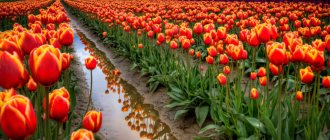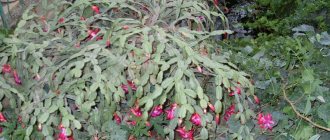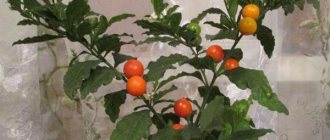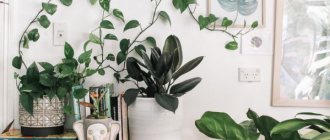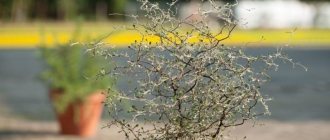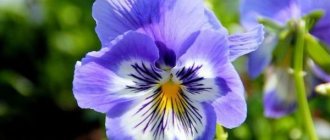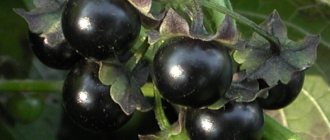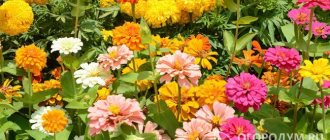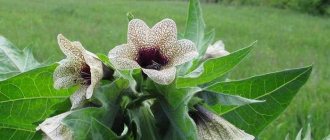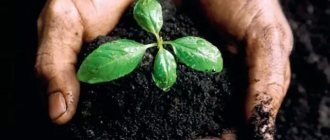The varieties of plants adapted for home conditions are determined by the temperature in the room. Often, ignorance of the characteristics of a particular flower leads to failure in its cultivation. Depending on the temperature in the room, ornamental plants are divided into three categories:
- Cold-resistant plants - from 8 to 14 degrees.
- Moderately heat-loving plants - from 14 to 17 degrees.
- Heat-loving plants - from 18 to 20 degrees.
Heat-loving plants will be discussed in more detail. Let's start with the fact that for the successful growth and development of such plants, the temperature in the room must be uniform, without sudden changes, so they should not be placed close to heating devices and open windows. Not only the upper parts of plants, but also their roots can suffer from temperature changes. Because of this, the soil temperature also needs to be carefully monitored. Let's look at specific examples of heat-loving plants.
Aphelandra
This plant is native to North and South America. There are more than 100 species of aphelandra. As a rule, it is low-growing, no more than 25 cm in height, has succulent stems, leaves are bright green with obvious white stripes. At the end of summer, during flowering, spike-shaped flowers similar to cones appear. After flowering is completed, the buds must be removed, otherwise the plant begins to form seeds that will ripen by winter. Aphelandra is a very capricious plant, and growing it at home will require a lot of effort. Such as selecting the right soil, enriched with minerals, introducing various complementary foods, sufficiently bright lighting, but without direct sunlight. Therefore, in the summer it is necessary to create shade for it, and in the winter, additionally install fluorescent lamps. Without this, the plant will lose its healthy appearance and flowering may be disrupted.
The most light- and heat-loving plants
Determining which plants to look for for a southern window sill, especially if we are talking about large windows, is not at all difficult. These are species that in nature are accustomed to very bright lighting, open areas and fairly hot temperatures - inhabitants of deserts and tropics. Such plants belong to the category of the most demanding species in terms of lighting intensity, the minimum permissible indicators for which are 10,000 lux. First of all, you should take a closer look at representatives of several classic “southern” categories:
- succulents - Sansevieria, Crassula ovata, Echeveria, Euphorbia, Aechmea;
- desert, classic cacti (cereus, mammillaria, echinocactus, prickly pear; unlike forest and epiphytic species, they are completely insensitive to direct southern sun);
- caudex - crops with thickened bottle-shaped stems, for example, adenium and bocarna;
- fruit-bearing indoor plants (coffee tree, olive, fig, citrus and other Mediterranean and southern species);
- garden and indoor plants - from bells, catharanthus, roses, gerberas, thunbergia, santolina, hydrangea to tulips, hyacinths and other bulbous plants, including bright tubs - bougainvillea and abutilon;
- sun-loving palms and false palms (date, cordyline, livistona, yucca).
But you don’t have to limit yourself to the classics. Such fashionable plants as beautifully flowering begonias, oleander, billbergia, variegated ficus, parthenocissus, pachypodium, crinium, hippeastrum, sprekelia, agapanthus, cattleya, eucalyptus, osmanthus, anigozanthus, brachychiton, bouvardia, cyperus, chlorophytum, episcia also grow well on southern windows.
Do not forget that even the largest southern window can be made a place comfortable for almost any plant with the help of simple shading, a protective, diffusing screen or curtain - basic protection from scorching rays. With the screen, withstand southern windows and many lovers of eastern and western windows - rhododendron, balsam, wallot, calceolaria, saxifrage, passionflower, nerine, calla lilies, clivia, cyclamen, Jacobinia, ginura, laurel, coleus, hibiscus, myrtle, leptospermum, clivia, pandanus etc.
When choosing plants for a southern window sill, you can also go “inversely” - identify plants that do not belong on a window sill with a southern orientation. You need to give up all plants that are afraid of temperatures above 25 degrees, preferring soft diffused lighting, partial shade and shade.
Coleus
Coleus has more than 150 varieties. It reaches a height of 80 cm. It is distinguished by its bright colors and ease of care. The leaves of the plant resemble nettles and are green, red and burgundy. Coleus tolerates sunlight well, but in the dry season you need to create shade for it, otherwise the plant will lose its color and begin to turn pale. The plant does not require special care. It is enough to water it with warm water and make sure that the soil is not dry, and feed it with liquid fertilizers containing potassium 2 times a week. In winter, feeding can be done once a month.
Room temperature requirements
In a residential area, it is now possible to grow plants that originally grew in the desert, near bodies of water, in open space. This requires compliance with certain conditions of detention, maximally adapted to existence in the natural environment.
A plant chosen taking into account the characteristics of the room will delight you with beauty and health, as well as with a minimum of effort and means for caring for it. The decisive indicator is the choice of plant, taking into account a suitable temperature regime that provides periods of dormancy and growth.
Depending on this indicator, indoor flowers are divided into three groups:
- Moderately thermophilic - grow favorably at 14-17 °C. These include aloe, asparagus, clivia, zebrina, zygocactus, kalanchoe, tradescantia, common ivy, cyperus.
- Heat-loving - they feel great at 18 - 25 ° C and suffer from the slightest drop in degrees. Their root system does not absorb air well and rots. These are tropical plants: begonia, peperomia, saintpaulia, coleus, bromeliad. When the air temperature rises above 28 °C, they also feel unwell: the leaves darken, wither, and fall off. It is important to ensure sufficient air humidity.
- Cold-resistant ones - oleander, date, raucaria, clivia, yucca, chlorophytum, cyclamen - develop well at 10 -15 ° C.
Each indoor plant has a temperature limit, below which they die. For example, for acalypha, anthurium, dieffenbachia, syngonium - this is 14 ° C, asparagus, begonia, Kalanchoe, dracaena, orchids - not lower than 10 ° C, and pelargonium, ivy, tradescantia, saxifrage are stored at temperatures up to 5 ° C.
In winter, it is important to provide flowers with peace by reducing watering and maintaining a thermal regime of 10 to 4 °C. Therefore, when choosing a suitable plant, take into account the temperature conditions of the room in which you plan to place your new green friend.
Peperomia
This plant is just gaining popularity in Russia and is therefore little known. The main advantage of the flower is its small size and ease of care. So far, about 50 types of peperomia are known. The height of the plant is from 35 to 50 cm, the color of the leaves is very diverse, from light green to dark emerald, sometimes silver or golden. The leaves are round in shape with a short petiole and smooth to the touch. The flowers of the plant have the shape of long tails covered with balls.
Peperomia is known for its medicinal properties and the presence of one or more plants in the house is an excellent prevention against colds. Flower growers also suggest that it has a beneficial effect on the digestive tract.
The conditions for keeping the flower do not change depending on the time of year, it is indifferent to humidity, only young plants under 3 years of age are replanted. For irrigation, you must use heated, settled water with the addition of citric acid. To feed the flower, you can use any liquid mineral complex.
What type of home flowers should you prefer?
Indoor plants can be classified according to different criteria: characteristics of reproduction and flowering, life expectancy, flowering time, type of stem and rhizome.
It is generally accepted to distinguish 8 main types of indoor flowers:
- Beautifully flowering plants delight the eye with magnificent inflorescences. These are azalea, anthurium, begonia, gerbera, rose, pelargonium, phalaenopsis, cyclamen, etc. They differ in flowering time (from a week to several months), life period (one year or more). They require special care, while delighting with regular flowering.
- Decorative deciduous specimens are the largest group, distinguished by the structure, shape of leaves, bushes, and their varied colors. There are bush-like and tree-like creatures with oval, linear, dissected, toothed leaves, as well as hanging stems. This group includes ardisia, dieffenbachia, cypress, ficus, boxwood, myrtle, schefflera, ivy, tradescantia, etc.
- Bromeliad plants are distinguished by hard, spiny leaves that form a rosette, in the center of which small flowers often form. The beauty of this species lies in the leaves located around the inflorescences and having different colors. These include Billbergia, Guzmania, Cryptanthus, and Aechmea.
- Cacti and succulents are a group of unpretentious specimens. They are distinguished by their compactness, fleshy, juicy stems. Cacti are covered with spines with light fluff. The species is represented by aloe, kalanchoe, crassula, hoya, sansevieria, etc.
- Ferns have spreading light green graceful leaves. They reproduce by spores, division and buds, but are not capable of flowering. They prefer partial shade and do not require careful care. Aadiantum, nephrolepis, polypodium and other varieties belong to this species.
- Bulbous plants are flowers with a bulb-shaped underground stem that collects nutrients necessary for nutrition. Does not tolerate damage or waterlogging. They have beautiful blooms and are great for creating compositions. These include hippeastrum, hyacinth, lily, eucharius, etc.
- Palm trees are inhabitants of the tropics, perfectly adapted to our climatic conditions. They have endurance, love light, and can grow over 2 meters. Coconut, date palms, rapis, and chamedorea trees are well placed in spacious rooms.
- Fruit and berry plants now grow well at home. To bear fruit, they require a lot of lighting, regular fertilizer, and warm air. These are avocado, lemon, coffee tree, tangerine.
True flower lovers prefer to have at least one representative of each group in their home greenhouse. When choosing a houseplant, you need to take into account all the characteristics: appearance, size, color scheme, and most importantly - the conditions of maintenance.
Saintpaulia
Simply put - violet. Blooms all year round. The flower has many shades - white, pink, purple, red. The shape of the leaves is elongated, the leaves themselves are fleshy. The main condition for proper cultivation is proper lighting, and this means diffused light for 11 hours a day. It is also necessary to eliminate drafts, they have an adverse effect on Saintpaulia flowers. You need to water the plant so that water does not fall on the leaves, as a result they quickly begin to rot; to avoid this, pre-settled water should be poured into the tray of the pot.
Is a warm winter more dangerous than an abnormally cold one?
Paradoxically, an abnormally cold winter with a lot of snow is less dangerous for heat-loving plants than a warm winter, but after which significant return frosts often occur. This, for example, happened with the very beautiful ornamental Matsudana willow on our site.
The tree grew in our garden for more than 5 years. During this time there were quite frosty winters. Some of the branches froze, the tips of others froze, but over the summer the willow was completely restored and increased in height. But suddenly, after one warm winter and serious May frosts, the lush three-meter tree completely died. I couldn’t find the strength to give even the slightest root growth.
Also, many gardeners regularly lose heat-loving plants after the so-called “black winters” (long severe frosts without snow), which occur after several warm winters, when the plants seem to have already become accustomed to the site and have reached large sizes.
Each plant needs a certain amount of positive (active) temperatures during the growing season. It is, of course, higher in southern plants than in the natives of the middle zone. As you know, the southern regions are characterized by long, hot summers and late autumn. And during this time, the plants have time to accumulate nutrients and prepare for the dormant period.
But in the middle zone, summer, at best, can linger until mid-September, after which rainy and noticeably cold days begin, which is not to the liking of representatives of heat-loving flora. A long cold spring, which is also not uncommon in our area, is an additional stress factor for southern plants. Such plants are not accustomed to stocking up on nutrients to last through a long, unfriendly spring.
In addition, warm “underwinters” often provoke the same “underflight”, which does not reach the climatic norm. Our ancestors observed a similar relationship, which was fixed in folk superstitions: “Fierce winter - sultry summer,” “If it’s warm in winter, it’s cold in summer.” Modern scientists confirm this state of affairs and give scientific explanations for this.
In simple words, this can be explained this way: in nature, everything is interconnected, and as you know, nothing disappears or appears out of nowhere. And while the cold is absent where it should be, “cold reserves” are gathering in the Arctic, and in the future they will certainly “take their toll” and end up on our territory. This can happen both in spring and summer. And the lack of active temperatures, as we noted above, negatively affects the endurance of plants.
Winter 2019-2020 turned out to be exceptionally warm across most of Russia
Sankhetia
Of all the varieties of Sanchetia, only one type of plant is grown at home - Sanchetia nobilis. It reaches a height of 1 meter, the leaves are large, bright green with golden veins. With proper care, flowering is possible. The flowers are tubular, spike-like, yellow or orange. In winter, it is necessary to provide additional lighting, otherwise the leaves will lose their color and begin to fall off. It is necessary to water the sanchetia abundantly and often, not forgetting to spray the leaves, and this must be done with warm and always boiled water. Fertilize the flower with mineral and organic fertilizers containing nitrogen.
How to choose a plant that requires minimal care
You are a big fan of flowers, but you are afraid to start growing green, blooming and fragrant beauty at home, since you spend most of your time at work and often go on business trips. In this case, too, there is a way out: opt for unpretentious indoor plants, among which there are indoor flowers for every taste: flowering, decorative foliage, bromeliads, fruit and berry and hanging flowers.
Let's take a closer look at the top most popular flowers that require minimal care:
Sansevieria, or mother-in-law's tail, loves dark as well as well-lit dry rooms. Only when the root system becomes crowded is it placed in a larger container. It does well without feeding with fertilizer. In winter it should not be disturbed at all.
Chlorophytum is an unpretentious, useful creature that is not afraid of drought or excessive moisture, shade or sun. But you won’t find a better green specimen capable of absorbing carbon monoxide.
Hoya carnosa, or wax ivy, is one of the flowering ampelous specimens that can survive without water for several months, receiving nutrition from thick glossy leaves. It may not be fed or replanted for a very long time. If you regularly pamper it with your attention, it will thank you with riotous color.
Nolina, or bocarnea, is a desert dweller with a bottle-like trunk. Its original appearance is often used by decorators when decorating interiors. To form the correct large base (caudex), the plant requires infrequent, abundant watering. It is enough to plant it in loose soil that is not rich in useful microelements and water it thoroughly once a month. An ideal option for people who are often forced to leave home for various reasons.
Kalanchoe is a healing plant, prefers infrequent watering, grows beautifully on south/north facing windows. There are many different hybrids that delight the eye with colorful paints.
Exotic zamioculcas thrives well in low-nutrient loose soil, in the shade and in the light. Experienced flower growers advise choosing soil for cacti/violets mixed with sand.
Spathiphyllum is a year-round flowering plant that tolerates lack of moisture very well. Does not accept frequent transplants. The only condition is a warm room, since it does not tolerate drafts.
Scindapsus is an ampelous species with round/heart-shaped green leaves with yellowish splashes. Well suited for landscaping walls. It rids the air of harmful substances, tolerates shade well, does not require much care and does not react to sudden temperature changes.
The list goes on and on. This category includes dracaena, fern, calathea, philodendron, aglaonema, aspidistra. Don’t forget: unpretentiousness does not mean a complete lack of care and watering. Each green creature, with attention to itself, will respond with good growth, lush flowering or rich greenery. Unpretentious flowers are an excellent start for beginners in floriculture.
Begonia
Indoor begonia pleases the eye of gardeners all year round and has many varieties. There are both small bushes 5 cm in height and large ones up to 3 meters. There are more than 1000 species of begonia. It mainly has carved leaves and voluminous flowers of various shades.
For the harmonious development of a flower, you need to choose the right place in the apartment, where there will be enough light for it, since the speed of growth will depend on the illumination. And this place must be permanent so that changes in light and temperature cannot destroy the plant. In summer, begonia should be watered generously with settled, clean water, but it is not recommended to spray the leaves, as this may cause unsightly spots to appear on them. In winter, watering should be reduced and the pot carefully insulated.
To prevent begonia from looking exhausted, it requires fertilizer. These are complex mineral mixtures created specifically for this plant. Feeding is carried out in spring and summer 1 or 2 times a week. But if the flower does not stop blooming even in winter, complementary feeding must be continued.
Large stones
Decorating an aquarium with stones is the most common and convenient. Rocks not only decorate the aquarium, but are also used by fish as shelter and a place for spawning. Stones made of granite, gneiss, basalt, porphyry, and other rocks are suitable for an aquarium. Limestone, dolomite and sandstone stones can only be used for hard water aquariums. All large structures and stones are installed on the bottom before backfilling the main soil, and it is recommended to lay sheets of plastic under them to avoid damage to the bottom.
Dieffenbachia
Dieffenbachia is native to South America. This is an evergreen, showy plant with elegant, large leaves. It is very popular among flower growers. But it has one drawback - the milky sap of the plant is poisonous, can cause swelling of the larynx and tongue, and if it gets into the eyes, it can cause blindness. Therefore, it is not recommended to acquire this plant if there are animals and children in the house. Caring for Dieffenbachia begins with choosing a place where there will be good lighting, but without direct sunlight, as the leaves can get burned. Due to lack of light, the leaves of the plant become small and lose color. Watering the flower should be regular, using settled melt or rain water, or boiled water. It is also necessary to spray the leaves daily and clean them of dust. In order for the Dieffenbachia to be straight and the leaves on it to be evenly spaced, it must be illuminated from above and constantly turned in different directions towards the light. Since the plant has large volumes, it constantly needs nutrients in the form of mineral fertilizers. You need to feed them in spring or early autumn once every 10 days. Fertilizers should be high in nitrogen.
Unpretentious indoor palms
Those who love hot sun and beaches in tropical countries can grow a palm tree at home. A certain exoticism allows you to get enough of the summer freshness, and is also an excellent addition to the interior design.
Most florists know that growing a palm tree at home is difficult - you need to spend time on care and constant monitoring of its condition. But the following unpretentious varieties are distinguished:
- Hamedorea does not require compliance with temperatures, light and other factors, since it can grow in the proposed conditions. The advantage is the need for transplantation no more than once every 1-1.5 years. The disadvantage is that you will have to keep the soil constantly moist during the period of active growth.
- Howea Forstera is similar to chamedorea, but has larger leaves and stems. It grows quickly if the soil is constantly moistened and fertilized, but can withstand short-term drought.
- Tall rapis grows well in a bright place; in the shade you will have to wait a long time for growth. In other respects, it is unpretentious - just water it when the soil dries out and feed it every month.
- The Liviston palm is one of the most popular among gardeners, although it requires a lot of attention. Care features include suitable and specially designed soil, watering and fertilizing.
To make palm trees grow faster, they are usually planted in one pot in the amount of 5-7 pieces. When transplanting to a new place of residence, all copies should also be sent together.
Indoor palm trees, video:
Indoor palm trees - jungle in Siberia
Please take a look at the following article. It contains more useful information - Indoor balsam: care at home.
Anthurium
Anthurium is native to the subtropical forests of Central America, so maintaining it at home will require a lot of effort. The flower has more than 900 species. The plant has large, heart-shaped leaves with bright veins. Flower colors come in red, pink, green and yellow shades. Anthuriums are extremely demanding on lighting; it must be bright, but without sunlight; in winter, the room must be equipped with fluorescent lamps; without proper lighting, the plant will wither. The plant also needs high humidity, it is necessary to water it 3, 4 times a week, as well as spray the leaves, it is advisable to provide the room with a humidifier. The flower also needs regular replanting and soil fertilization.
Background
If your aquarium is installed against a wall, then you can use a decorative background. The easiest way to do this is with the help of various films and decorations sold in pet stores. It’s more interesting to do it yourself, using branches, leaves or decorative panels. The design of the aquarium looks most natural if the background is decorated with thin tall plants or moss, planted in a dense wall.
Beloperone
Beloperone has more than 60 varieties. The plant is a shrub with bare and slightly pubescent leaves of a round shape, red, orange or yellow. It blooms all year round. Grows in warm, ventilated and well-lit areas. The flower should not be watered frequently; the soil should not be waterlogged. Drying should also be avoided, otherwise the plant will lose all its flowers and leaves. The plant requires constant, weekly feeding due to year-round flowering. Young beloperones must be replanted annually, and bone meal must be added to the soil so that the plant takes root better.
Priming
Backfilling the soil is the next step in aquarium design. If you are installing bottom filters or heaters in your aquarium, they should be installed before filling the soil. In those places where the plants will be planted, under the main soil, it is recommended to pour a nutrient substrate. The optimal thickness of the base soil layer is 4–5 cm at the front wall and 6–7 cm at the back. But remember that if the soil is not restrained by plant roots, decorative elements or special holding devices, then over time the soil will be distributed in an even layer along the bottom. The high bottom relief is created using terraces.
Blekhnum
Blechnum is a type of fern with bright green, leathery leaves and a short rhizome. Loves high humidity; if it is not possible to create humidity in the room, then it is necessary to create it inside the pot. It is necessary to water the blechnum daily, but do not allow stagnation of water so that the plant does not die. The plant needs to be replanted once a year in soil containing peat. Blekhnum is afraid of sunlight, so it should be placed in the bathroom or kitchen, next to the sink, most importantly away from the window. For many heat-loving plants, a number of general rules can be distinguished:
- In summer, it is best to stay in the fresh air, mainly during daylight hours, while avoiding drafts.
- Direct sunlight should not touch the plants.
- In the cold season, it is necessary to remove the plant from the window and provide it with good lighting.
By following them, plants receive proper care, and their owners can enjoy the beauty of their pets all year round.
Cold-resistant plants
All wild plants of the temperate zone are cold-resistant and frost-resistant to varying degrees. Many of them prefer to be in the shade on a hot afternoon.
Traditional garden crops for Russia are cold-resistant: carrots, onions, beets, peas, horseradish, sorrel and others. Carrots, garlic, horseradish preserve the root system under the snow. Parsley leaves remain fresh under the snow until severe frosts, and new leaves grow from the carrot-like root in the spring.
Rice. 2. Parsley.
